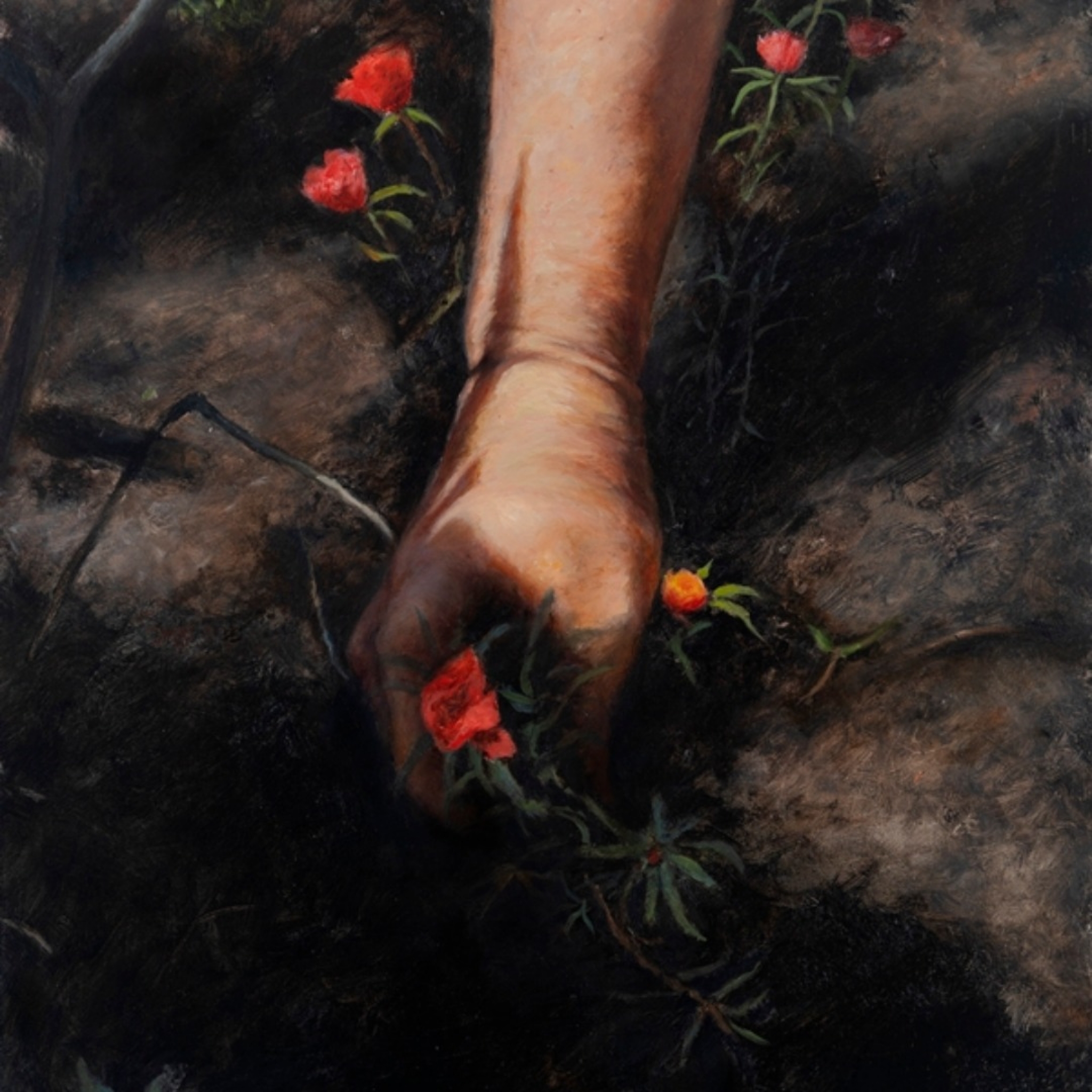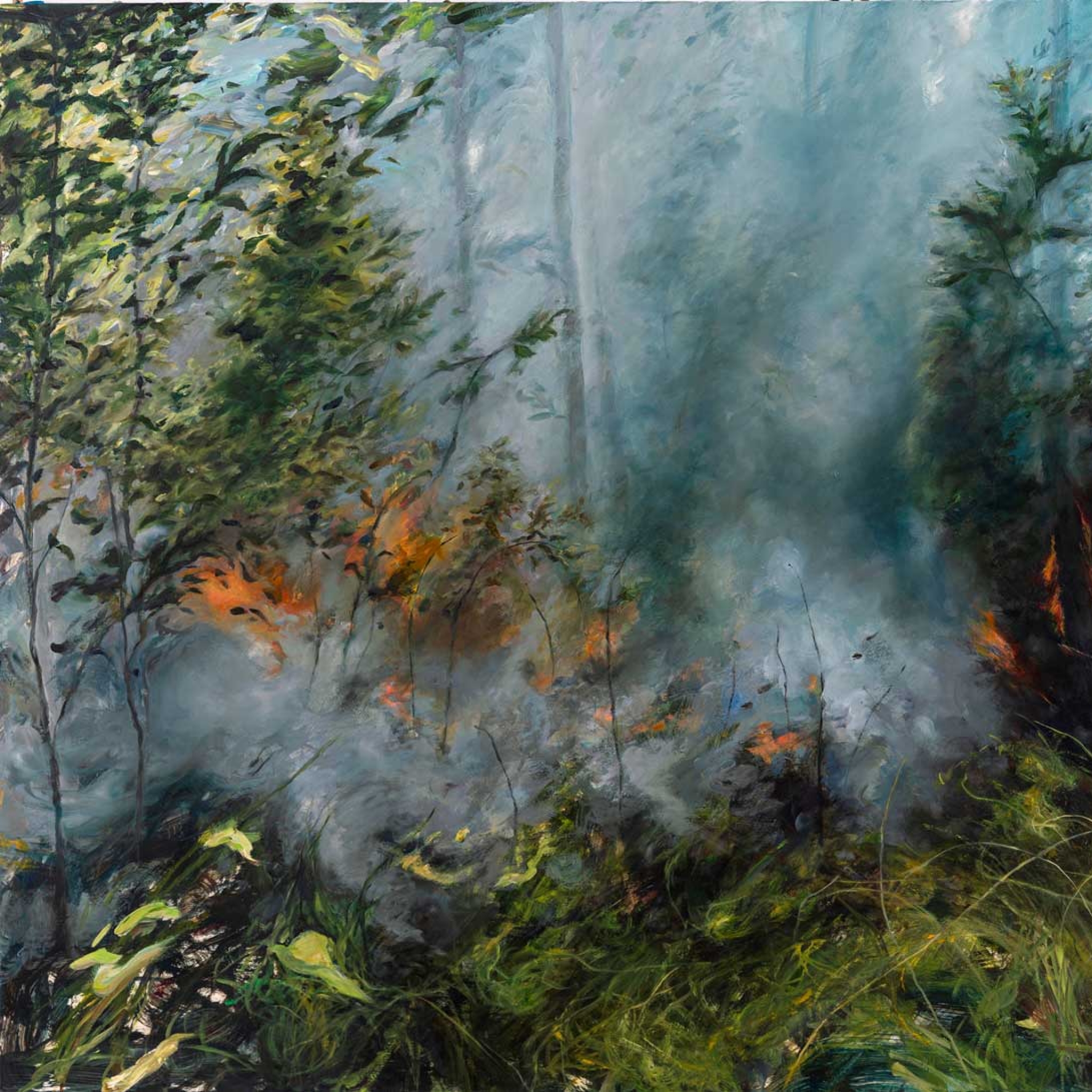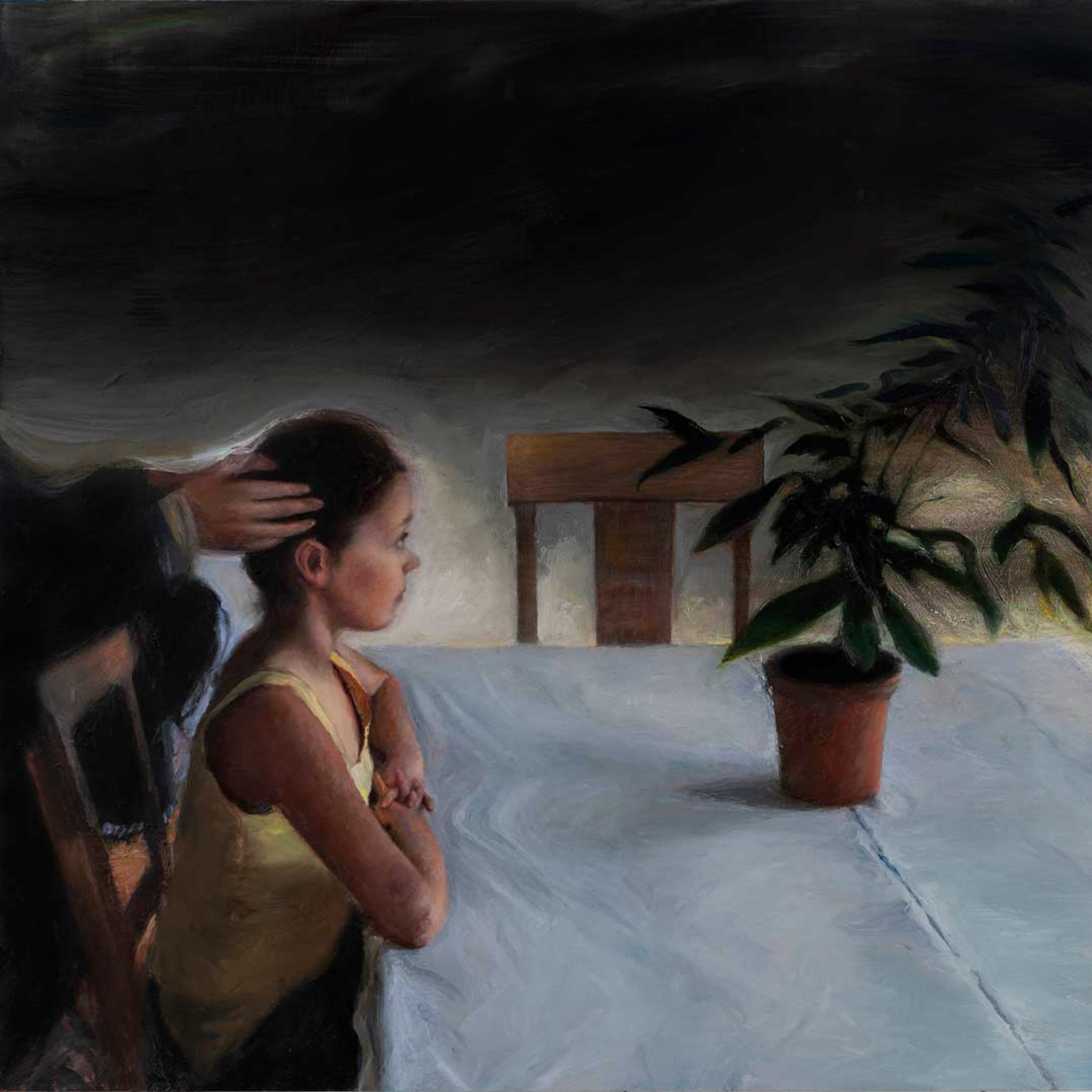Women Heal through Rite and Ritual
Lavett Ballard | Tawny Chatmon | Oletha DeVane | Shanequa Gay | Delita Martin | Elsa Muñoz | Renée Stout | exhibition page
Elsa Muñoz
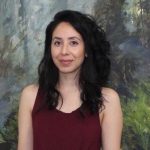 Desahogamiento, literally translated as “the act or process of undrowning,” has always been with me. I grew up hearing this word from my mother who believed in grief as medicine. She would describe desahogamiento as the self-directed, embodied “grief work” which makes healing possible. But it wasn’t until reading “Woman Who Glows in the Dark” by curandera Elena Avila that I learned desahogamiento is a literal healing technique within curanderismo, or Mexican folk medicine. My praxis is centered in the union of intuitive ways of knowing (particularly dreamwork and storytelling), our changing climate realities, and the role of art as a somatic healing technology. In this, my paintings manifest from the act of undrowning.
Desahogamiento, literally translated as “the act or process of undrowning,” has always been with me. I grew up hearing this word from my mother who believed in grief as medicine. She would describe desahogamiento as the self-directed, embodied “grief work” which makes healing possible. But it wasn’t until reading “Woman Who Glows in the Dark” by curandera Elena Avila that I learned desahogamiento is a literal healing technique within curanderismo, or Mexican folk medicine. My praxis is centered in the union of intuitive ways of knowing (particularly dreamwork and storytelling), our changing climate realities, and the role of art as a somatic healing technology. In this, my paintings manifest from the act of undrowning.
I am interested in the study of ecopsychology, the idea that our bodies (including unconscious aspects of the psyche) are sensitive to the transitions of the biosphere; somatic ecology, the theory connecting our relationship to our bodies to the environmental crisis; and what Gloria Anzaldúa termed “La Facultad: an intuitive form of knowledge that includes but goes beyond logical thought and empirical analysis.” These narratives are moving, urgently, to the forefront for a generation of artists concerned with realigning nature-culture relationships and reframing dominant narratives surrounding bodies of color, indigenous lands, and the cultural impact on both.
Biography | Resume
Biography
Elsa Muñoz is a Mexican-American artist born and raised in Chicago (1983). She received her BFA in oil painting from the American Academy of Art (Chicago, IL) in 2006. She’s since had 8 solo shows including one at the National Museum of Mexican Art (2011) and at the Union League Club of Chicago (2016) along with several group shows throughout the United States. Most recently, she was a 2019 recipient of the Helen & Tim Meier Foundation Achievement Award, a generous grant which will allow her to expand her practice. She is very excited to work in a proper studio outside of her apartment.
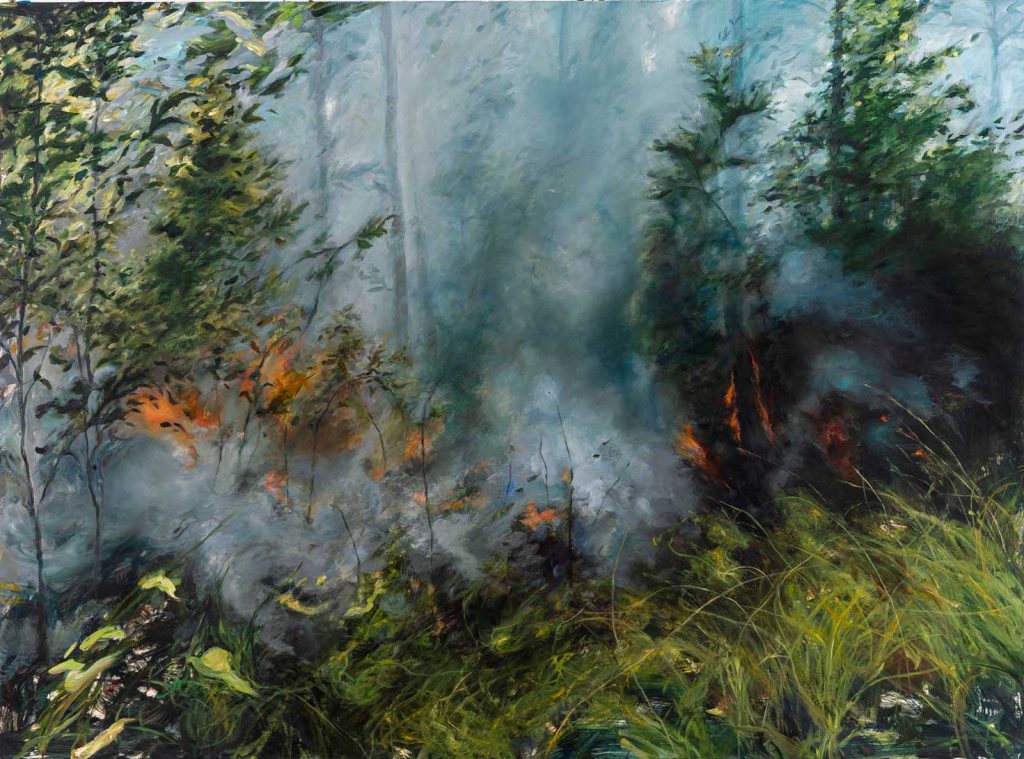
I first began the Controlled Burn series in 2009. At the time, my attraction toward this symbol was rooted in a personal encounter with one in childhood. A forest guide explained to my 3rd grade class that in forestry, prescriptive fire is a healing agent. Fire removes invasive species and returns nutrients back to the soil, renewing it. Learning that fire could be an agent for health and restoration was powerful. And given my interest in psychology, it was a symbol I carried closely for the parallels I could draw between fire and the effects of trauma. A slowly regenerating forest ground became a symbol for (and a promise of) resilience.
More recently, however, this series has taken on a completely different tone in light of our current ecological crisis. With the recent bushfires in Australia, a video [Mishandling of Fires in Australia] interview began circulating online featuring an Australian indigenous fire practitioner named Victor Steffensen. The interviewer asks, “What do you do? How is what you do different to the way the rest of the firefighting community operates?” Steffensen responds, “It’s totally opposite to what everyone is doing here. Everyone’s talking about the aftermath and it’s always the way Western society works–always acting when it’s too late. Whereas all the work I do is in prevention of that, not to save your own house, but to save the bushlands and look after the environment as a whole.” He goes on to explain that these devastating fires could have been completely avoided if frequent controlled burns had been regularly administered to the land. The practice of controlled burning is, in effect, preventative indigenous medicine.
It’s become apparent that much of our worldwide climate despair is a reckoning of settler colonialism and its practice of rampant resource exploitation, replacing indigenous ways of knowing and co-existing with nature. Through these climate-related crises, we are urgently being called to re-indigenize our ways of understanding and of living on this earth.
Artist’s Short
Mishandling of Fires in Australia
